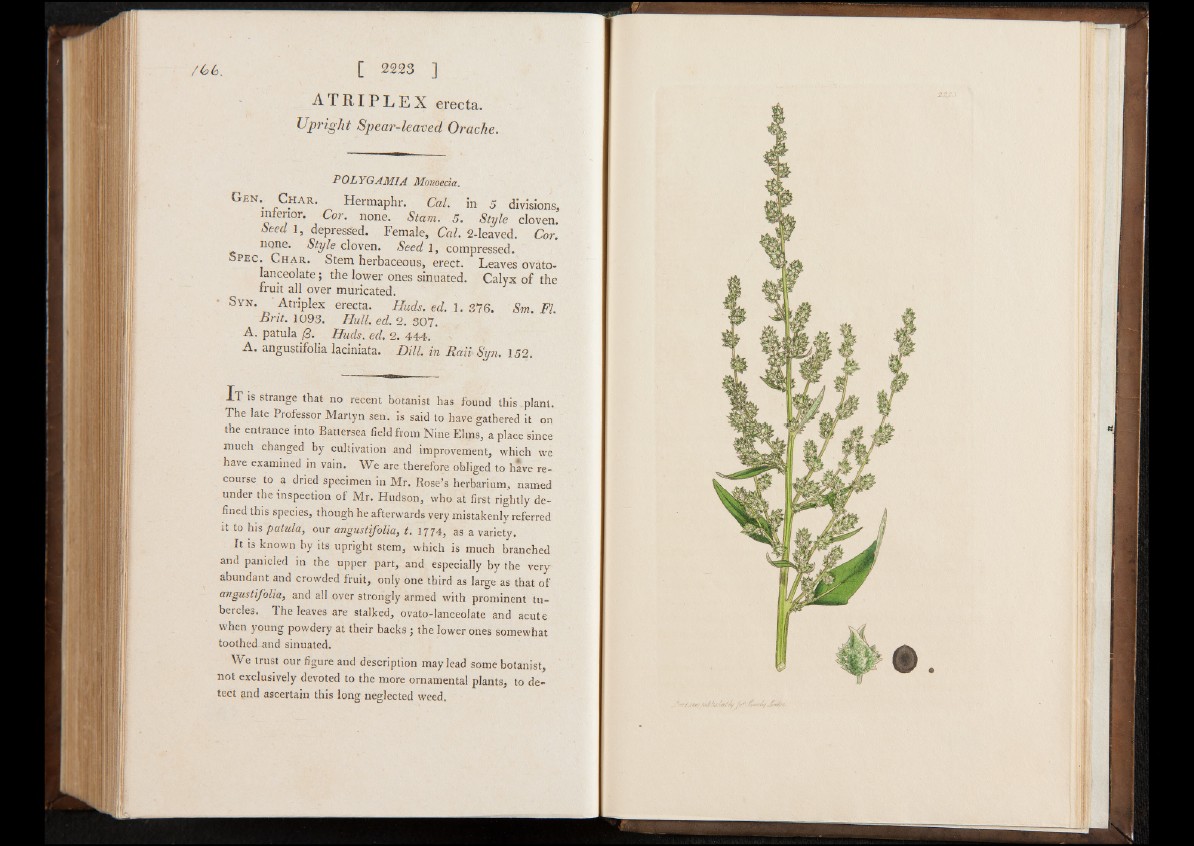
/ (o(o. [ 2223 ]
A T R I P L E X erecta.
Upright Spear-leaved, Or ache.
POLYGAMIA Manoecia.
G e n . Ch a r . H e rm a p h r . Cal. in 5 divisions,
in fe rio r . Cor. n on e . Siam. 5. Style c lo v en .
Seed 1 , d epressed . F em a le , Cal. 2 -lea v ed . Cor.
n on e . Style c lo v en . Seed 1, comp re ssed.
Spec. Char. S tem h e rb a ceo u s , e re c t. L e a v e s ovato-
la n c e o la te ; th e low e r ones s inuated. C a ly x o f th e
fru it all o v e r muricated.
S y n . A t r ip le x e rec ta . Buds. ed. 1. 3 7 6 . Sm. FI.
Brit. 1093. Hull. ed. 2. 3 0 7 .
A . p atula 12. Buds, ed, 2. 4 4 4 .
A . angu s tifo lia laciniata. Dill, in Rail Syn. 1 5 2 .
I T is strange that no recent botanist has found this .plant.
The late Professor Martyn sen. is said to have gathered it on
the entrance into Battersea field from Nine Elms, a place since
much changed by cultivation and improvement, which we
have examined in vain. We are therefore obliged to have recourse
to a dried specimen in Mr. Rose’s herbarium, named
under the inspection of Mr. Hudson, who at first rightly defined
this species, though he afterwards very mistakenly referred
it to his patula, our angustifolia, t. 1774, as a variety.
It is known by its upright stem, which is much branched
and panicled in the upper part, and especially by the very-
abundant and crowded fruit, only one third as large as that of
angustifolia, and all over strongly armed with prominent tubercles.
I h e leaves are stalked, ovato-lanceolate and acute
when young powdery at their backs ; the lower ones somewhat
toothed and sinuated.
We trust our figure and description may lead some botanist,
not exclusively devoted to the more ornamental plants, to detect
and ascertain this long neglected weed.